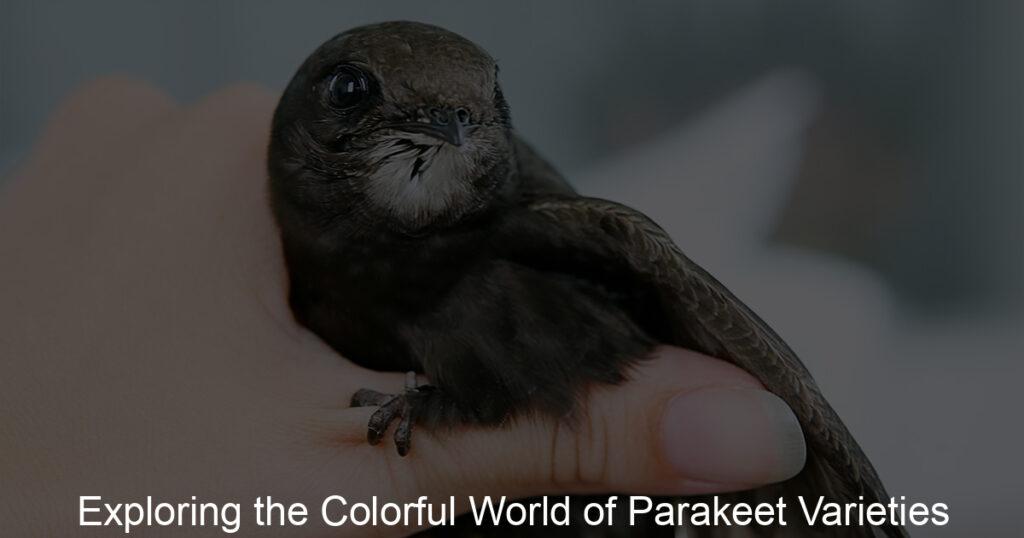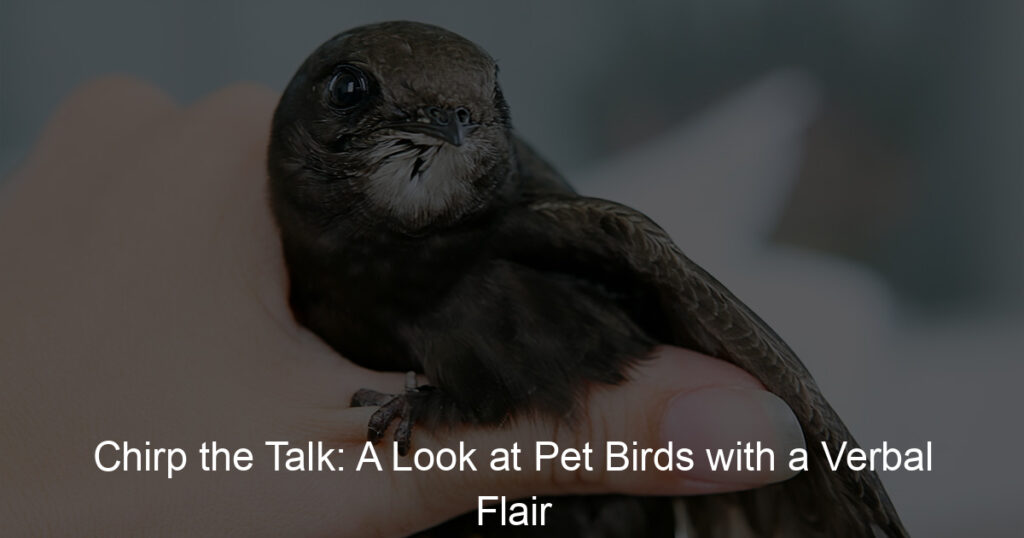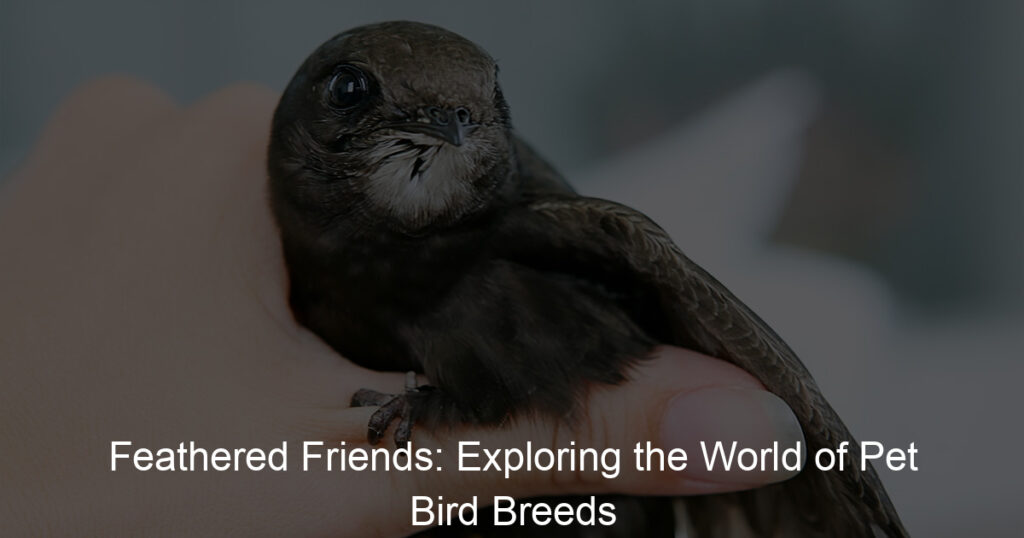
Understanding Finch Genetics
Finch genetics is a fascinating area of study that helps us understand the unique characteristics and behaviors of these birds. In this section, we will delve into the basics of finch genetics, its importance, and how it influences the behavior and appearance of finches.
-
Introduction to Finch Genetics
Finch genetics is the study of how traits are passed from parent finches to their offspring. It’s like a secret code that determines everything about a finch, from its color and size to its song and behavior. Scientists use this code to predict how future generations of finches will look and behave.
For example, if a finch has a red beak, it’s because its genes tell it to have a red beak. If a finch sings a certain song, it’s because its genes tell it to sing that song. It’s all in the genes!
-
Importance of Finch Genetics
Understanding finch genetics is important for several reasons. First, it helps scientists and bird watchers identify different species of finches. By looking at a finch’s physical traits and behaviors, they can tell which genes it has and which species it belongs to.
Second, it helps conservationists protect endangered finch species. By understanding a species’ genetics, they can breed finches with certain traits to help the species survive. For example, if a species is dying out because it can’t find enough food, scientists might breed finches with genes for a longer beak, so they can reach more food.
-
How Finch Genetics Influence Behavior and Appearance
Finch genetics play a big role in a finch’s behavior and appearance. For example, some finches have genes that make them more aggressive, while others have genes that make them more social. Some finches have genes for bright colors, while others have genes for more muted colors.
These genetic differences can even influence a finch’s survival. For example, a finch with bright colors might be more attractive to mates, but it might also be more visible to predators. A finch with aggressive behavior might be better at defending its territory, but it might also have trouble making friends.
As you can see, finch genetics is a complex and fascinating field. By understanding it, we can learn a lot about these amazing birds and how they live their lives.
Basics of Finch Genetics
Understanding the genetics of finches is a fascinating journey into the world of biology. In this section, we will delve into the basics of finch genetics, exploring the genetic traits of finches, common genetic variations, and how these traits are passed down through generations.
- Genetic Traits of Finches
Finches, like all living organisms, have unique genetic traits that define their physical characteristics and behaviors. These traits include their color, size, shape of their beak, and even their songs. For instance, the Zebra Finch, a common pet bird, is known for its distinctive black and white stripes, a trait determined by its genes.
- Common Genetic Variations in Finches
Genetic variations in finches are quite common and are the result of mutations in their DNA. These variations can lead to differences in physical traits among finches. For example, the Gouldian Finch exhibits a wide range of color variations, from bright red and yellow to green and blue, all due to genetic variations.
- How Genetic Traits are Passed Down in Finches
Genetic traits in finches are passed down from parents to offspring through genes. Each finch receives half of its genes from its mother and half from its father. These genes combine to form the unique genetic makeup of the offspring. For example, if a mother finch has a red beak and the father has a yellow beak, their offspring might have a beak color that is a mix of both.
Let’s look at a simple table to understand this better:
| Parent 1 | Parent 2 | Offspring |
|---|---|---|
| Red Beak | Yellow Beak | Mixed Beak Color |
In conclusion, the study of finch genetics provides us with a deeper understanding of how traits are inherited and how genetic variations occur. This knowledge is not only important for bird enthusiasts and breeders but also contributes to the broader field of genetics and evolution.
Finch Genetics Unraveled
Let’s delve deeper into the fascinating world of finch genetics. We’ll explore the role of genetics in finch breeding, the impact of selective breeding, and a case study on breeding for specific traits.
Finch Breeding
Finch breeding is a complex process that heavily relies on genetics. Let’s break it down into simpler terms.
- Role of Genetics in Finch Breeding
- Impact of Selective Breeding on Finch Genetics
- Case Study: Breeding for Specific Traits in Finches
Genetics plays a crucial role in finch breeding. Each finch carries unique genetic material, which determines its physical characteristics and behavior. When two finches mate, they pass on these genetic traits to their offspring. This is why a baby finch may have similar features or behaviors to its parents.
Selective breeding is a technique used to enhance specific traits in finches. By choosing parents with desirable characteristics, breeders can influence the genetic makeup of the offspring. However, this can also lead to a reduction in genetic diversity, which may make the finches more susceptible to diseases or environmental changes.
Let’s look at a case study to better understand this. In an experiment, breeders wanted to produce finches with longer beaks. They selectively bred finches with longer beaks over several generations. The result was a new generation of finches with noticeably longer beaks than their ancestors. This case study clearly illustrates how selective breeding can alter the genetic traits in finches.
Understanding finch genetics can be a complex task, but it’s also incredibly fascinating. By unraveling the mysteries of finch genetics, we can gain a deeper appreciation for these remarkable birds and the intricate processes that shape their lives.
Finch Species Genetics
Finches are a diverse group of birds, each species unique in its own way. A significant part of this uniqueness comes from their genetics. Let’s delve into the fascinating world of finch species genetics.
- Genetic Differences Among Finch Species
- Evolutionary Genetics of Finches
- Case Study: Darwin’s Finches
Each finch species carries a unique set of genetic traits that distinguish it from others. These genetic differences are responsible for the wide array of colors, sizes, and beak shapes we see in different finch species. For instance, the Zebra Finch, native to Australia, has a distinctive black ‘tear drop’ eye stripe, a trait that is genetically passed down to its offspring.
Finch species have evolved over millions of years, adapting to their environment and developing new traits to survive. This process of evolution is driven by changes in their genetic code. For example, finches that live in environments with hard-shelled seeds have developed stronger, larger beaks to crack open these seeds. This trait has been passed down through generations, becoming a permanent part of their genetic makeup.
One of the most famous studies of finch genetics involves the finches of the Galapagos Islands, often referred to as ‘Darwin’s Finches’. These finches are named after the renowned scientist Charles Darwin, who studied them during his voyage on the HMS Beagle.
Darwin noticed that each island had its own type of finch, each with a unique beak shape. He hypothesized that these finches all descended from a common ancestor, but had evolved different beak shapes to adapt to the different types of food available on each island. This theory was later confirmed through genetic studies, proving that genetic variations play a crucial role in species adaptation and survival.
| Finch Species | Unique Genetic Trait |
|---|---|
| Zebra Finch | Black ‘tear drop’ eye stripe |
| Galapagos Finch | Varied beak shapes |
In conclusion, the study of finch species genetics provides valuable insights into how species adapt and evolve. It’s a fascinating field that continues to reveal the intricate connections between genetics, evolution, and biodiversity.
Finch DNA
Finch DNA is a fascinating subject that offers insights into the world of genetics. It is the blueprint that determines the physical characteristics and behaviors of these unique birds. Let’s delve into the intricacies of Finch DNA and its contribution to genetic diversity.
-
Decoding the Finch DNA
Decoding Finch DNA is like solving a complex puzzle. Each piece, or gene, fits together to create the complete picture of a Finch’s traits. Scientists use advanced tools and techniques to unravel this genetic code. They look for patterns and variations in the DNA sequences that can explain the bird’s unique characteristics.
For example, the Zebra Finch, a common species, has about 1.2 billion DNA base pairs. That’s a lot of information to decode! But by doing so, scientists can understand why some Finches have different colors, sizes, or songs.
-
How Finch DNA Contributes to Genetic Diversity
Genetic diversity is the variety of genes within a species. It’s crucial for the survival and adaptation of species over time. Finch DNA contributes significantly to this genetic diversity.
Finches, especially those found on the Galapagos Islands, are known for their diverse beak shapes and sizes. This diversity is a result of variations in their DNA. Different genes control different traits, such as beak size and shape. When these genes vary, they create a wide range of physical traits, contributing to the overall genetic diversity of the species.
-
Key Takeaway: Importance of Genetic Diversity in Finches
The genetic diversity observed in Finches is a testament to the power of evolution and natural selection. It allows Finches to adapt to different environments and survive in various conditions.
For instance, Finches with larger, stronger beaks can crack open hard seeds, while those with slender, pointed beaks are better at catching insects. This diversity in traits, driven by variations in Finch DNA, ensures the survival of the species in changing environments.
Therefore, understanding Finch DNA and its contribution to genetic diversity is not just interesting, but also crucial for conserving these amazing birds and their habitats.
Finch Genetic Research
Finch genetic research is a fascinating field that provides us with a wealth of information about these unique birds. This research not only helps us understand finches better but also contributes significantly to the broader field of bird genetics.
Bird Genetics
Bird genetics is a branch of biology that studies the genes and hereditary traits of birds. It helps us understand why birds look and behave the way they do. One of the most studied birds in this field is the finch, and for good reasons.
- Comparative Study: Finch Genetics vs Other Bird Genetics
- How Finch Genetics Contribute to Bird Genetics Research
- Future Prospects of Finch Genetic Research
Finches are a group of birds that are incredibly diverse, with over 200 species worldwide. Their genetic makeup varies significantly from other birds, making them an excellent subject for comparative studies. For instance, finches have a unique set of genes that allow them to adapt to different environments and diets. This is different from many other birds, which have a more uniform genetic structure. Understanding these differences can help scientists learn more about how birds evolve and adapt to their surroundings.
Finch genetics contribute significantly to bird genetics research. The famous study of Darwin’s finches on the Galapagos Islands is a prime example. By studying the finches’ beak sizes and shapes, scientists were able to understand how different species evolve over time. This research has not only provided insights into finch evolution but also has broader implications for understanding bird and animal evolution in general.
The future of finch genetic research is promising. With advancements in technology, scientists can now study the finch genome in more detail. This could lead to new discoveries about how genes influence bird behavior and adaptation. It could also help conservation efforts by providing information about genetic diversity and population health. The possibilities are endless, and we can look forward to many exciting discoveries in the future.
In conclusion, finch genetic research is a vital part of bird genetics. It provides unique insights into bird evolution and adaptation, and has the potential to contribute significantly to conservation efforts. As we continue to explore the genetic world of finches, we can expect to uncover even more fascinating facts about these remarkable birds.
Conclusion
-
Summary of Finch Genetics
Finch genetics is a fascinating field that helps us understand how these beautiful birds inherit their unique traits. We’ve learned that genes are like instructions that tell a finch’s body how to grow and behave. These genes are passed down from parent finches to their offspring, creating a wide variety of finch species with different colors, sizes, and songs.
-
Importance of Understanding Finch Genetics
Understanding finch genetics is not just for bird lovers. It’s important for everyone! This knowledge helps scientists understand how life works, from the smallest cell to the largest ecosystem. It also helps us protect finches and their habitats. By knowing more about their genetics, we can make sure that every finch species continues to sing its unique song for generations to come.
-
Future Directions in Finch Genetics Research
The future of finch genetics research is bright. Scientists are using new technologies to study finch genes in more detail than ever before. They’re discovering new things about how genes control a finch’s appearance and behavior. This could lead to new ways to protect finches and their habitats. It might even help us understand our own human genetics better!








